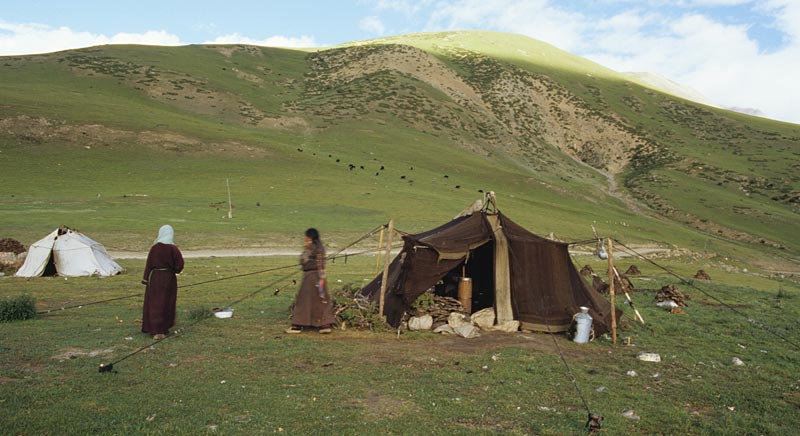Tibetans are pastoral nomads, roving around in a constant quest to find the best grass for their herds of yaks, sheep and goats, and for their horses. Putting an end to this quest is the inexplicable introduction of grassland fencing by Chinese authorities. Fencing of grasslands means that nomads lose their mobility and lose access to rotational grazing. Tibetan nomads have developed a profound knowledge of the grasslands, gained through expertise passed down from generation to generation. This knowledge extends to considerable skills in dealing with animals: dealing with yaks, horses, cashmere goats, sheep, and Tibetan mastiffs.
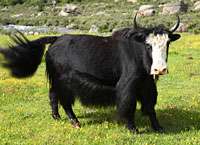
The yak is the main beast of burden on the Tibetan plateau. Its long shaggy coat keeps the yak toasty in cold conditions—a kind of cow with dreadlocks. The yak can handle snow conditions with ease. In summer, the yak's shaggy coat may cause it to overheat, so it loves standing in freezing rivers to cool off. Yaks can be quite temperamental, owing to their wild origins: it takes a lot of skill to deal with their innate stubbornness. Out on the grasslands, nomads keep wayward yaks from wandering from the herd by firing warning stones from a sling—made from yak-hair, of course. The sling is wielded with astonishing accuracy at great distance.
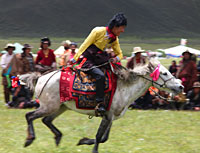
The Tibetan horse, here seen at a horse-racing festival, is thought to be a distinct bloodline. These small stocky horses are very strong—and famed for their endurance at altitude. In centuries past, they were highly valued by the Chinese as war-horses. On the ancient Tea-Horse Road, tea from China went west to Tibet, and in exchange, Tibetan horses were traded. In the summer, Tibetan nomads gather to show off their horse-riding skills at festivals on the grasslands. The saddle-rugs are often hand-made.
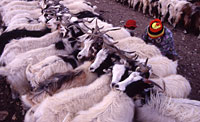
Pictured here are cashmere goats, tied up at the horns in lines for milking. Sheep and cashmere goats are part of the nomad herder's flock: they are raised for milk, wool and meat. There was once a large international wool trade conducted from Tibet. These days, the focus is more on cashmere, which is the fine underwool grown by the goats in severe weather, as in fierce biting winds and freezing cold (the underwool will not grow in milder weather conditions). Cashmere wool, woven into shawls and scarves, is highly valued in the fashion industry because it is light yet very warm.
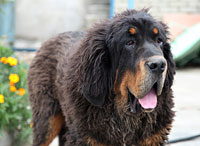
Guarding all of the above from attack from poachers and predators is the Tibetan mastiff, a dog about the size of a St Bernard. The Tibetan mastiff has been known to take on predators like the snow leopard or the Tibetan wolf, going after baby yaks. The Tibetan mastiff is thought to be the oldest guard-dog in existence, with a bloodline going back thousands of years. Due of its lion-like mane (the lion being a lucky symbol in China), the dog is highly prized as a status symbol among China's ultra-rich. In 2011, a reddish-coated Tibetan mastiff sold for the astonishing sum of US$1.5 million to a coal baron in eastern China. But none of the breeders are Tibetan: the trade is run entirely by Chinese entrepreneurs.
